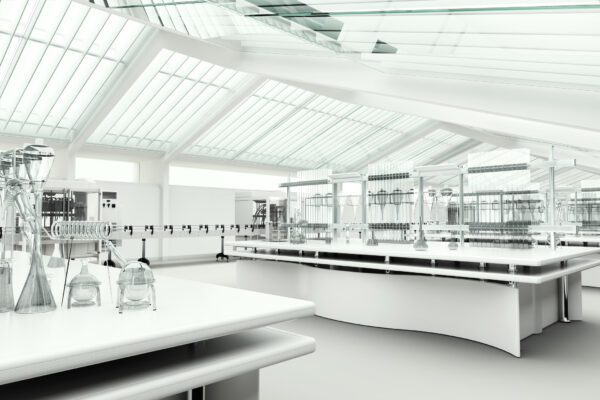Using the Potential of UV Disinfection: Safeguarding Health and Hygiene
UV disinfection, a modern technology extensively used in different industries, has proven reliable in removing harmful virus. From comprehending the systems at play to implementing this modern technology in our daily lives, this conversation aims to lose light on the possibility of UV disinfection and its role in securing our wellness and hygiene.
Understanding UV Disinfection
UV disinfection is a very effective and commonly utilized approach for getting rid of damaging pathogens and making sure health and wellness and health. This method utilizes ultraviolet (UV) light to suspend microorganisms by harming their DNA and avoiding them from recreating. UV disinfection is specifically reliable against bacteria, infections, and various other bacteria that can cause infections and illness.
The principle behind UV sanitation is easy yet effective. UV sanitation can be used in various setups, including water therapy plants, health care facilities, food handling markets, and air filtration systems.
Among the benefits of UV disinfection is its ability to effectively and efficiently get rid of a variety of pathogens without the requirement for chemicals or additives. Unlike other disinfection techniques, such as chlorine or ozone, UV disinfection does not present dangerous byproducts or chemical residues into the atmosphere. In addition, UV disinfection is a non-contact process, which implies that it does not need physical call with the microorganisms, lessening the danger of cross-contamination.

The Scientific Research Behind UV Disinfection
The efficiency of UV disinfection lies in its capacity to interrupt the hereditary material of microbes, providing them not able to duplicate and consequently removing their harmful capacity. This high-energy UV-C radiation is most effective in sanitation applications since it can penetrate the cell wall surfaces of bacteria and harm their DNA or RNA.
When bacteria are revealed to UV-C radiation, the power is absorbed by their genetic product, triggering bonds to damage and forming chemical responses that interrupt their capability to recreate. This protects against the microorganisms from spreading out and replicating infection. UV sanitation is particularly reliable against infections, germs, and fungi, consisting of typical microorganisms such as Escherichia coli, Salmonella, and Influenza.
The science behind UV disinfection is supported by considerable study and research studies. It has actually been revealed that direct exposure to an enough dose of UV-C radiation can accomplish a high level of sanitation, frequently going beyond 99.9% efficacy in killing microorganisms. It is vital to keep in mind that the efficiency of UV sanitation depends on numerous variables, consisting of the strength of UV-C radiation, direct exposure time, distance from the UV source, and the susceptibility of the microbe to UV radiation (uv surface disinfection).
Applications of UV Sanitation
Provided the substantial research study and efficiency of UV disinfection in disrupting the hereditary product of microbes, it is crucial to explore the different sensible applications of this modern technology. UV disinfection has actually proven to be a useful device in a large range of sectors where maintaining a clean and secure setting is essential.
One major application of UV disinfection remains in health care setups. UV light can be made use of to disinfect surfaces, tools, and even the air in healthcare facilities and clinical centers. This helps to decrease the threat of healthcare-associated infections and guarantees a much safer environment for people and healthcare employees.
Another essential application remains in the food and drink sector. UV sanitation is made use of to deal with water and remove harmful microorganisms, such as E. coli and Salmonella, from the production procedure. uv surface disinfection. This makes certain the safety and quality of the products we eat
UV disinfection is also commonly utilized in water therapy plants and wastewater treatment facilities. It is a reliable technique for damaging harmful bacteria, viruses, and bloodsuckers that can be existing in water resources. This assists to supply risk-free and clean drinking water to areas and shield the setting from air pollution.
Furthermore, UV disinfection is employed in the pharmaceutical industry to sterilize tools and keep the stability of products. It is also made use of in research laboratories and research study facilities to avoid contamination and guarantee accurate outcomes.
Advantages of UV Disinfection Modern Technology
One significant benefit of employing UV disinfection innovation is its ability to effectively get rid of bacteria without using harsh chemicals. This is particularly useful in different settings, such as medical care centers, water treatment plants, and food processing sectors, where the existence of damaging pathogens postures a substantial risk to read this article public health and safety.
Unlike standard sanitation methods that count on chemicals like chlorine or ozone, UV disinfection modern technology uses ultraviolet light to target and damage the DNA of microorganisms, properly neutralizing their capacity to replicate and cause infections. This procedure not only gets rid of the need for potentially harmful chemicals however also lowers the risk of chemical deposit or byproducts staying in the cured atmosphere.

Additionally, UV disinfection innovation is eco pleasant. As it does not rely on making use of chemicals, it eliminates the requirement for their manufacturing, disposal, and transport, lowering the total carbon footprint linked with sanitation procedures. In addition, UV sanitation systems have a longer life-span contrasted to chemical-based techniques, leading to less regular replacement and further reducing waste.
Implementing UV Disinfection in Life
To efficiently implement UV disinfection in daily life, organizations and individuals can incorporate mobile UV disinfecting tools into their hygiene regimens and cleansing methods. These devices are designed to give off ultraviolet light, which has been proven to eliminate or suspend a large range of bacteria, consisting of fungis, microorganisms, and infections. By using mobile UV disinfecting gadgets, people can disinfect generally touched surfaces and objects, such as link cellular phone, laptops, tricks, and doorknobs, lowering the danger of spreading germs and infections.
Along with integrating mobile UV sanitizing tools, it is essential to adhere to appropriate standards and recommendations for efficient UV disinfection. This includes making certain that the gadget is made use of correctly and for the advised period to achieve ideal sanitation results. It is likewise essential to focus on precaution, such as using safety eyewear and preventing straight exposure of the UV light to the skin.

Additionally, organizations can implement UV disinfection modern technology in different settings to boost health methods. For example, hospitals and Learn More Here medical care centers can utilize UV sanitation robots to sanitize person rooms, running cinemas, and other high-touch locations. Food processing industries can incorporate UV disinfection systems right into their assembly line to boost food security and prevent contamination.
Verdict
In final thought, UV sanitation technology holds terrific possible in guarding health and hygiene. With its many benefits, UV sanitation is a valuable tool for preserving a tidy and healthy and balanced setting.
Unlike various other sanitation methods, such as chlorine or ozone, UV disinfection does not introduce hazardous byproducts or chemical deposits into the atmosphere. It is vital to keep in mind that the performance of UV sanitation depends on numerous factors, consisting of the strength of UV-C radiation, direct exposure time, range from the UV source, and the sensitivity of the microbe to UV radiation.
An additional benefit of UV sanitation innovation is its capability to supply constant and rapid disinfection. Unlike manual cleaning methods, which can be time-consuming and require substantial labor, UV sanitation systems can be automated and run constantly, making sure constant disinfection without human intervention.To effectively implement UV sanitation in everyday life, individuals and organizations can integrate portable UV sanitizing tools into their hygiene regimens and cleaning up practices.
 Andrew Keegan Then & Now!
Andrew Keegan Then & Now! Michael Fishman Then & Now!
Michael Fishman Then & Now! Earvin Johnson III Then & Now!
Earvin Johnson III Then & Now! Karyn Parsons Then & Now!
Karyn Parsons Then & Now! Daryl Hannah Then & Now!
Daryl Hannah Then & Now!